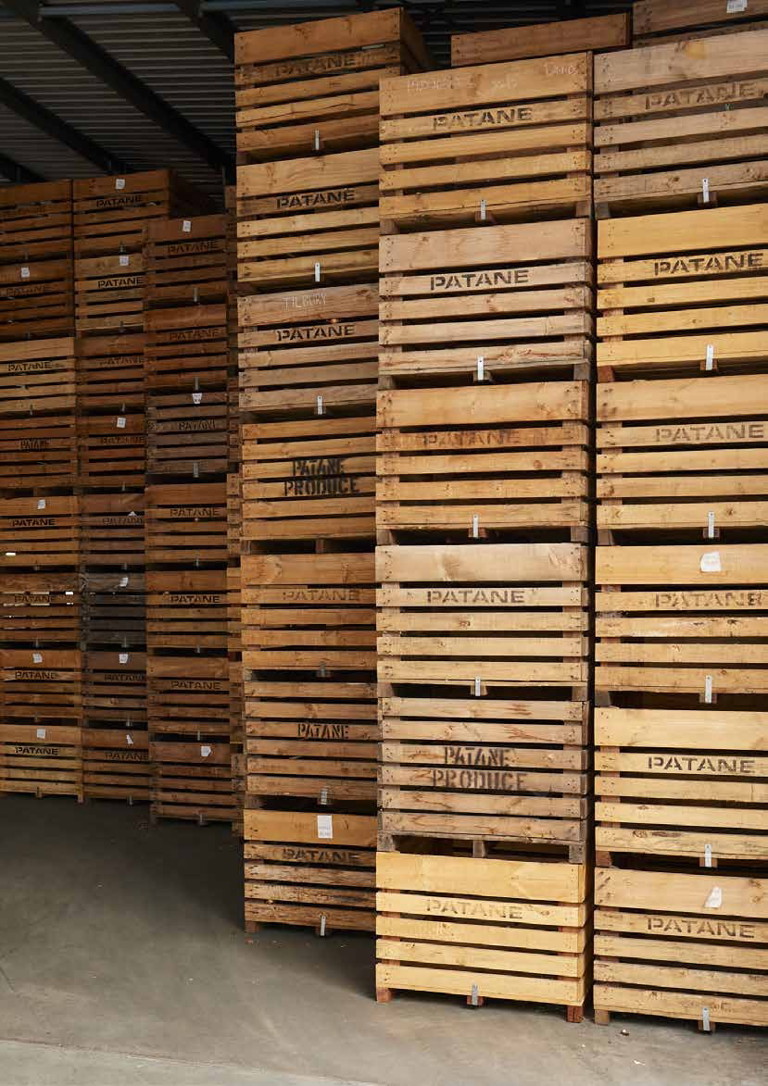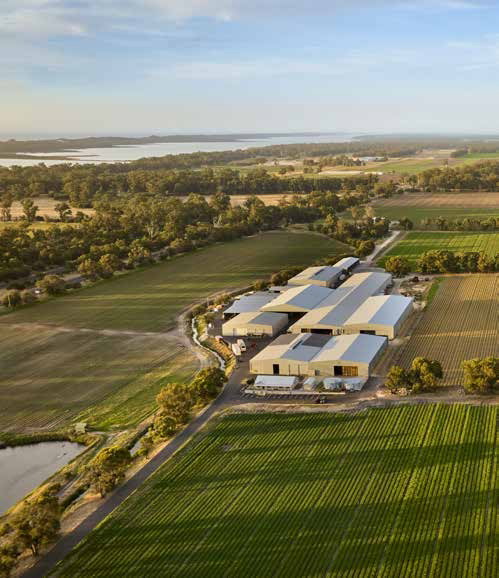profile
Patane FACTOR
Pennie and Lauren Patane are passionate about horticulture and its value in agriculture and to the Australian people.
Words Anna Flanders
“THERE’S a lot of education that needs to happen.” That’s the message from dynamic mother-daughter duo Pennie and Lauren Patane of Patane Produce. Pennie is on national, state and local representative boards and Lauren is the current West Australian Young Rural Ambassador of the Year and on the Onion SIAP. They are passionate about the business of vegetables and are determined to bring value and less waste.
The education is around pricing – “retailers tell us consumers want to buy $1 bags of carrots, how do we run a business on that,” says Pennie. Education is also needed on waste – “supermarkets define what is ‘perfect’ and shelf-worthy, but it’s to increase their competitiveness and has nothing to do with a quality product,” says Lauren. And education is needed on the industry itself – “we do a lot of good things as an industry and we need to promote that,” says Pennie.
Pennie’s husband Michael is a third-generation Patane vegetable farmer. His grandfather came out from Italy and farmed potatoes and fruit trees at Newlands in the Donnybrook area. His father continued that. One of five siblings, however, Michael had to leave the farm. After meeting Pennie, together they leased one of the properties they now own and built Patane Produce.
“When we started, we leased land in the Donnybrook area. Then moved to the Myalup Strip and started leasing the property we now run our operations from. While leasing, we bought another smaller property in this area, then gradually purchased other properties,” says Pennie.
The farm totals 760 hectares of which three hectares are shed space for processing and cool storage. The business employs about 80 staff, including around 30 PALM Scheme workers, 15-20 working holiday makers (backpackers) and 30 permanent residents. They grow carrots, broccoli, onions and potatoes. About 30 per cent of the produce is sold to the domestic market and 70 per cent is export. They have their own transport line, and they produce around 25,000 tonnes per year and an additional 10,000 tonnes of ‘waste’ (fed to their cattle).
Waste is a big topic for Lauren, and it’s one on which she based her presentation for the West Australian Young Rural Ambassador Award. Her title win was announced at the Perth Royal Show in 2023 and she will go on to represent Western Australia at the national awards in March 2024.
“It’s quite disturbing how much we throw away. Supermarkets tighten their specifications, and continue to do so, for consumers, and consumers continue to learn what to expect. What doesn’t make the grade is waste.
“At one stage, none of us really cared what our produce looked like. However, it’s now another way supermarkets can compete with their competitors in a tight industry. When they can’t squeeze on price anymore, they can offer what they define as an even more perfect product,” says Lauren.

Photography
Frances Andrijich
“We need to educate the consumer on the effort that goes into farming vegetables. If it’s bent, hollow or has a blemish, there’s nothing actually wrong with it. For example, this time of year broccoli can quite often have hollow stems because the sun has come out and the growing period shortens so the stem doesn’t fill out. That doesn’t make it a bad product. That’s just the environmental growing conditions.”
For Pennie, sustainability and the value of vegetable growers are topics close to her heart. It’s a complex issue and needs a whole-of-industry discussion. She was part of AUSVEG’s recent ATMAC European Study Tour and learned Europe was experiencing some of the same issues. Producers had even switched out plastic packaging for paper, but were now back-tracking on that due to whole-of-life costs.
Patane Produce uses recyclable plastic for its packaging. However, there are no plastic recyclers in the state, so it ends up as landfill. Can we go back to buying non-packaged fruit and vegetables? That then raises shelf-life issues around longevity and damage. In Europe, she says, processors reported some children had only ever seen diced and sliced vegetables in packaging, never the actual vegetable.
“There’s a lot of pressure on us at the moment from our customers, retailers and the public. Horticulture is probably one of the better agricultural industries in terms of impact on the environment. But there are a lot of questions about packaging and which way we’re supposed to go,” says Pennie.
“Do we as a society, or as a country, get better at recycling the plastic or do we create a whole new packaging source that is still going to need some kind of facility to process it. For either of those to happen, there needs to be some infrastructure created by the government because, as far as I can tell, businesses that have tried to do it have failed. It’s frustrating. We could just turn around tomorrow and start selling loose product and save a hell of a lot of packaging. But people aren’t going to buy it. Consumers want sustainable packaging, so long as it doesn’t affect their budget or convenience.”
Patane Produce is highly mechanised, with only broccoli harvested by hand. Inputs and water are dripfed to their sandy soils – “we fertilise each paddock once a week and water two to three times a day for 15 minutes at a time”. To protect their profits, they have taken packing and transporting of produce inhouse to control their supply chain and know their costs in real time. And the business has invested heavily in agtech.
“We need to attract more people into our industry who are going be our operators. Businesses like ours have mechanised quite a bit in the packing shed, but we’re probably not utilising or getting the full potential out of this equipment because we don’t really have many staff working in the shed who are able to operate it at anything other than a fairly basic level,” says Pennie.
“ Consumers want sustainable packaging, so long as it doesn’t affect their budget or convenience ”
She points to that as a big problem for the industry. The industry is moving away from manual labour for costs and safety, but also because people don’t want to perform manual labour jobs. However, Pennie questions how the vegetables industry can afford to find and employ skilled workers.
“If you create these skilled roles, you’ve then got to create a full-time job for a very skilled worker. How do you attract that person? How do you afford it? How can you pay them what they would earn on the mines or in any other industry? Especially as, at the same time, we’re constantly being pushed to drop our pricing.”
Pricing is linked to value and value is linked to consumers’ perception of the vegetables industry. Pennie and Lauren are both passionate about their industry and say that it does a lot of good things. However, exposure is an area of concern, as is what’s actually being projected to the public.
“How can we get people to value vegetables and what vegetables offer for health and taste? People don’t want to work in an industry that isn’t valued,” says Pennie.
“It’s innovative and fast-paced,” says Lauren. “It’s definitely a challenging industry, and no two days are the same. So I guess that’s what I like – there’s something going on every day. I went to university with the intent to return to the farm. I have been working here now for five or six years.”
Pennie is similarly passionate. And she looks at it more as a business, than a lifestyle. “I think we’ve got a really good message to sell. But we just don’t sell it. I get quite frustrated sometimes when we talk to government departments and we’re arguing about the use of water. Look at golf courses, wineries and horse studs. They are all very nice and I know they contribute to our mental wellbeing. But the vegetable industry feeds people. We aren’t a luxury, we are a necessity.”
Patane Produce www.pataneproduce.com


Patane Produce operates from this farm on Myalup Strip. It was the first property Pennie and Michael leased when they started out. They now run 650 hectares of which three are processing and storage sheds.
